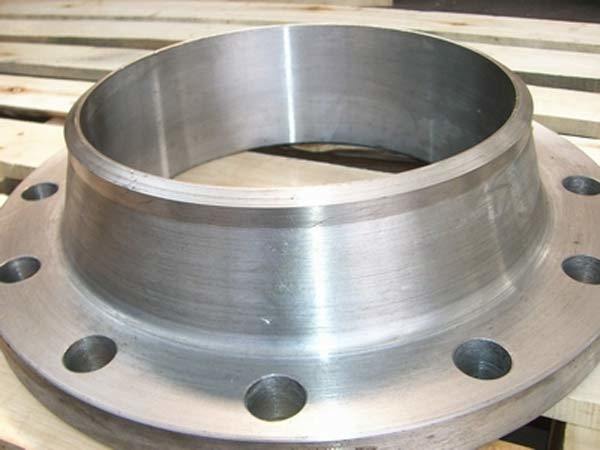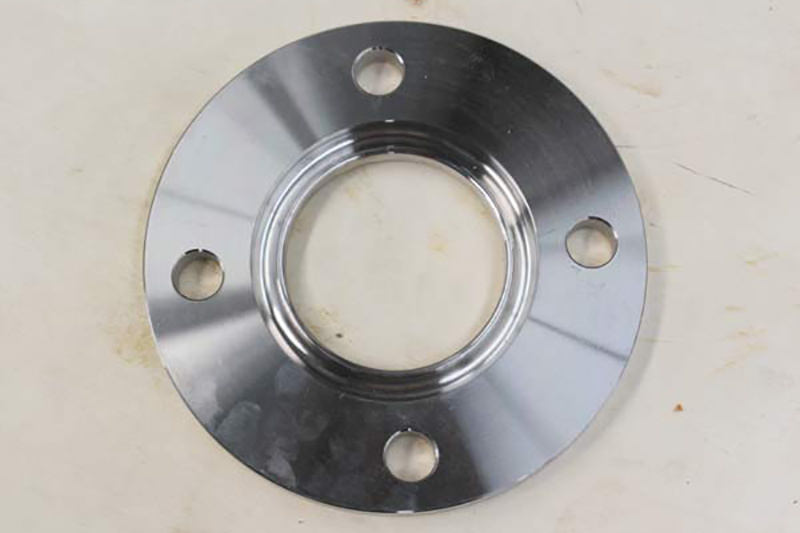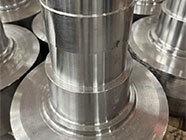Maintaining Your Threaded Flanges: Expert Tips for Longevity in Construction and Decoration
Release time:
2025-06-26
Maintaining Your Threaded Flanges: Tips for Longevity Table of Contents Understanding Threaded Flanges The Importance of Maintenance for Threaded Flanges Common Issues with Threaded Flanges and Their Solutions Best Practices for Maintaining Threaded Flanges Protective Coatings and Treatments for Threaded Flanges How to Inspect Threaded Flanges Effectively When to Repla
Maintaining Your Threaded Flanges: Tips for Longevity
Table of Contents
- Understanding Threaded Flanges
- The Importance of Maintenance for Threaded Flanges
- Common Issues with Threaded Flanges and Their Solutions
- Best Practices for Maintaining Threaded Flanges
- Protective Coatings and Treatments for Threaded Flanges
- How to Inspect Threaded Flanges Effectively
- When to Replace Threaded Flanges
- Frequently Asked Questions
Understanding Threaded Flanges
Threaded flanges play a critical role in various piping and connection systems within the construction and decorative materials industry. These flanges feature internal threads that allow for easy connection to pipes or other fittings. They are favored for their ease of installation and disassembly, making them ideal for applications where frequent maintenance or modifications are expected.
By understanding the design and function of threaded flanges, we can better appreciate the importance of their maintenance. These components must withstand considerable stresses, including temperature fluctuations, pressure variations, and environmental factors. Therefore, proactive maintenance is essential for ensuring their longevity and reliability.
The Importance of Maintenance for Threaded Flanges
The longevity of threaded flanges directly impacts the overall integrity of piping systems. Regular maintenance helps to prevent leaks, reduce the risk of failures, and maintain operational efficiency. Here's why maintenance is crucial:
- Enhanced Safety: Properly maintained flanges reduce the chances of leaks that could lead to hazardous situations.
- Cost Efficiency: Regular inspections and maintenance can identify potential issues before they escalate into costly repairs or replacements.
- Performance Optimization: Well-maintained flanges ensure optimal performance of the entire piping system, leading to increased efficiency and reduced energy consumption.
Common Issues with Threaded Flanges and Their Solutions
Despite their robust design, threaded flanges are not immune to issues. Understanding common problems can assist in implementing effective solutions:
1. Corrosion
Corrosion is one of the primary threats to threaded flanges, especially in environments with high moisture or exposure to chemicals. It can weaken the material, leading to leaks and structural failures.
Solution: Apply appropriate protective coatings and regularly inspect for early signs of corrosion.
2. Cross-Threading
Improper installation can lead to cross-threading, which compromises the integrity of the connection.
Solution: Ensure proper alignment during installation and use tools that minimize the risk of cross-threading.
3. Gasket Failure
Gasket failures can occur due to wear, poor installation, or material incompatibility, resulting in leaks.
Solution: Regularly check gaskets for wear and replace them as necessary, ensuring compatibility with the flange materials.
Best Practices for Maintaining Threaded Flanges
To ensure the longevity of threaded flanges, implementing best maintenance practices is essential. Here are some proven strategies:
1. Regular Cleaning
Accumulation of dirt, debris, and other contaminants can lead to corrosion and other issues. Therefore, cleaning threaded flanges regularly is crucial.
Tip: Use a soft brush and suitable cleaning agents to avoid damaging the surface.
2. Lubrication
Applying lubricant to threaded areas can help prevent seizing and make disassembly easier during maintenance.
Tip: Choose lubricants that are compatible with the materials used in the flanges.
3. Routine Inspections
Performing routine inspections allows for early detection of potential issues. Look for signs of wear, corrosion, or misalignment.
Tip: Develop a checklist to ensure thorough inspections are conducted regularly.
Protective Coatings and Treatments for Threaded Flanges
Utilizing protective coatings and treatments is essential for enhancing the lifespan of threaded flanges:
1. Anti-Corrosive Coatings
These coatings protect against environmental factors that promote corrosion. Options include paint, powder coatings, or specialized anti-corrosive sprays.
2. Galvanization
Galvanizing involves coating flanges with zinc to provide a sacrificial layer against corrosion.
3. Thread Sealant
Applying thread sealant can help create a watertight seal, preventing leaks and protecting the threads from environmental damage.
How to Inspect Threaded Flanges Effectively
Conducting effective inspections of threaded flanges requires a systematic approach:
- Visual Inspection: Look for visible signs of wear, corrosion, or damage.
- Torque Testing: Use a torque wrench to ensure connections are secure and within specified torque limits.
- Leak Testing: Perform leak tests to identify any potential leak points.
When to Replace Threaded Flanges
Knowing when to replace threaded flanges is crucial for maintaining system integrity. Consider replacement if:
- Visible corrosion or pitting is present.
- Threads are stripped or damaged.
- Frequent leaks occur despite maintenance efforts.
Frequently Asked Questions
1. How often should threaded flanges be inspected?
It is recommended to inspect threaded flanges at least once a year, or more frequently in corrosive environments.
2. What is the best way to clean threaded flanges?
Use a soft brush and a suitable cleaning agent to remove debris without damaging the flange surface. Rinse thoroughly and dry.
3. Can I reuse threaded flanges after maintenance?
Yes, as long as they show no signs of wear or damage and are properly cleaned and lubricated, threaded flanges can be reused.
4. What type of lubricant should be used on threaded flanges?
Choose a lubricant compatible with the flange material and the environment in which it operates.
5. Are there specific coatings recommended for threaded flanges?
Anti-corrosive coatings and galvanization are both effective options for protecting threaded flanges from environmental damage.
Conclusion
In conclusion, maintaining threaded flanges is paramount for ensuring the longevity and reliability of piping systems within the construction and decoration materials industry. By understanding the common issues that arise, implementing best maintenance practices, and utilizing protective coatings, we can significantly enhance the lifespan of these critical components. Regular inspections and proactive measures are essential for preventing costly repairs and ensuring optimal performance. By following the tips outlined in this guide, professionals can achieve greater success and safety in their projects, ultimately contributing to a more efficient and reliable infrastructure.

Previous
Latest developments
Maintaining Your Threaded Flanges: Expert Tips for Longevity in Construction and Decoration
Maintaining Your Threaded Flanges: Tips for Longevity Table of Contents Understanding Threaded Flanges The Importance of Maintenance for Threaded Flanges Common Issues with Threaded Flanges and Their Solutions Best Practices for Maintaining Threaded Flanges Protective Coatings and Treatments for Threaded Flanges How to Inspect Threaded Flanges Effectively When to Repla
Understanding Flanged Connections: Essential Insights for Building and Decorative Materials
Flanged connections are a pivotal aspect of piping systems, specifically designed to join two sections of pipe or a pipe to a valve or fitting. These connections utilize flanges—flat pieces of material with holes for bolts—that create a secure seal between components. A properly executed flanged connection ensures the integrity and efficiency of fluid transport systems, making it an essential topi
Top 5 Advantages of Incorporating Sliding Flanges in Your Designs
Top 5 Advantages of Incorporating Sliding Flanges in Your Designs Introduction to Sliding Flanges In the world of construction and design materials, sliding flanges stand out as a crucial component that facilitates a variety of applications. These unique connections allow for flexibility in piping systems, making them indispensable in many industrial and architectural projects. Understanding the
Understanding High Neck Flanges: Essential Components in Construction and Decoration
High neck flanges, also known as long neck flanges, are specialized connectors used in piping systems. Unlike standard flanges, they feature an extended neck that provides additional height to the flange face. This design is particularly beneficial in applications requiring higher alignment precision and enhanced sealing capabilities. The extended neck allows for better support and alignment of th
The Evolution of Flat Flanges in Building Materials: A Comprehensive Insight
The Evolution of Flat Flanges in Building Materials Introduction to Flat Flanges in the Construction Industry Flat flanges are critical components in various piping and construction applications, serving as flat surfaces for connecting pipes, valves, and other equipment. Their evolution reflects advancements in engineering, material science, and design, contributing to the efficiency and safety of
Understanding Steel Industries Forgings: Key Insights for Professionals
Steel industries forgings play a crucial role in the manufacturing of high-performance components that are integral to various sectors, particularly in construction and decorative materials. Forgings are produced by shaping metal through localized compressive forces, which can be applied through hammers or presses. This manufacturing process not only improves the mechanical properties of the steel








